All Hallows Eve - History & Trickery
- CAN Girl

- Oct 1
- 22 min read
Updated: Oct 28
Day 1
🍂Autumn ushers in a tapestry of vibrant foliage, crisp air, haybales, pumpkin-flavored delights, horror films, and sugary-delights. The season of treats and tricks is officially upon us.
What makes this time of year so special is its invitation for people of all ages to unleash their creativity. Whether it's transforming homes with festive flair, curating the ultimate candy selection, or crafting the perfect costume, the opportunities for imaginative expression are boundless.

At the heart of All Hallows Eve lies a deep-rooted sense of community. Over the next 31 days we'll delve into the rich history, legends, and folklore that shape the traditions we cherish today. May these stories inspire a renewed feeling of connection and shared celebration.
Welcome and I hope you enjoy!
Day 2: Hallowtide - All Hallows Day

The origins of Hallowtide (All Hallows Eve / All Hallows Day / All Saints Day) trace back to an era of saints, martyrs, and the persecution of Christians under the Roman Empire. Feasts were created to honor the saints of that period.
Initially, the celebrations for All Hallows Day took place in the spring, but in the 9th century, Pope Gregory III shifted All Saints Day to November 1st. Globally, this day is dedicated to honoring all saints, both known and unknown.
In many cultures, people commemorate this day by visiting the graves of their family members, celebrating their lives, lighting candles at the cemetery, and adorning their graves. This is observed in countries such as Austria, Bavaria, Belgium, Croatia, France, Italy, Hungary, Poland, Switzerland, Mexico, and the Philippines.
Catholics observe this day as one to remember the saints and pray for those in purgatory
Germans observe Allerheiligen known as silent day (stiller Tag)
Guatemala cook fiambre for their dead and it is customary to fly kites to help unite the dead with the living
Austria & Bavaria it is customary for godfathers to give their godchildren Allerheiligenstriezel, a braided yeast pastry and people decorate and visit graves of their family members
Day 3: Hallowtide - All Souls Day

All Souls Day, also called "The Commemoration of All the Faithful Departed" is part of a tradition steeped in history. Initially lasting eight days, the octave was established in 1430 by Pope Sixtus IV to enable the granting of indulgences by the church, aiding souls in transitioning from Purgatory. All Souls Day signifies the end of the octave, during which prayer activates the church's indulgence.
The tradition of praying for souls also developed a tradition of "souling". Originally, children, Soulers, would go door to door seeking a sweet treat or soul cake. The Soulers (beggars) would promise to offer up prayers for the dead in exchange for treats or sweets. Fun Fact: The Soulers would also use lanterns carved from root vegetables ... a modern day jack-o-lantern. 🎃
Besides the custom of going door to door, All Souls Day was seen as a time when spirits could visit the living. Families would light candles at graves as well as outside their homes to guide the spirits of their loved ones back. In Italy, All Souls Day is marked by a meal for both the living and the deceased.
The tradition continues to this day. During COVID, the Pope extended the period of indulgences granted by the church throughout November to enable people to visit the churchyards safely.
Day 4: Celtic Gods and Saints - Lugus, Cernunnos & St. Brigid
Celtic religions extended across Europe for millennia. This geographical spread and long duration led to variations in religious beliefs and the emergence of hundreds of deities, many of whom are scarcely documented perhaps due to deities being very localized to their specific tribe.
A deity frequently referenced across Europe was Lugus. Lugus was revered as a god of skill, arts, and noble kingship. He was celebrated for his bravery, nobility, and sovereignty, embodying the ideal of kingly virtue.
Perhaps the most notable Celtic god was the Horned God, Cernunnos, a man crowned with antlers surrounded by animals. Statues and images of Cernunnos are seen across Europe and known as the god of fertility, of the underworld, and of bi-directionality.
Fun Fact: The blend between Celtic paganism and Christianity remains controversial to this day. St. Brigid, one of the most important saints in Ireland who founded the abbey of Kildare, is still thought of by some as a pagan deity due to her connection with a Celtic goddess.
Day 5: A Pilgrim's Vision

According to tradition, the origin of All Souls Day originated from the vision of a pilgrim while on his voyage to the Holy Land.
After a shipwreck left the pilgrim stranded on an island, he encountered a hermit. This hermit delivered a message to the pilgrim from the afterlife. Throughout his many years on the island, the hermit observed flickers of light and fire emanating from the cracks in the island's cliffs. Accompanying the light, he heard the moans of people suffering in purgatory and the demons surrounding them. The demons spoke about the power of prayers in liberating souls. The hermit's one request was for the pilgrim to convey that very message to Cluny.
The pilgrim immediately sought out Odilo, abbot of Cluny, upon his return. As a result Odilo instituted the day following All Saints Day be a day to pray for those souls in purgatory, freeing them from pain and torment.
Day 6: Celtic Culture - The Druids

As Celtic cultures existed across Europe, they were intentional to limit the documentation and recordings of their societies, knowledge, and religious teachings. This behavior was routed in the belief that anything documented would be forgotten, therefore it was best to preserve critical knowledge in specific people and positions, the Druids.
Druids were regarded as a priestly class. To earn the title of Druid, individuals underwent extensive training, which could last up to 20 years. Their training and practices were secluded and secretive, believed to have taken place in caves and forests.
Druids acted as societal leaders and were regarded as the custodians of History, Lore, Medicine, Law, and Botany, even delivering legal judgments.
The Druids served as advisors to kings, becoming trusted sources of knowledge for theoretical insights and strategic choices. They acted as intermediaries between the Celts of Gaul, Britain, Ireland, and the Gods, providing guidance on societal decisions across the tribes.
While the knowledge impressed many, the druids were also seen as a threat. They taught the ideals divination, reincarnation, and transmigration of souls. Entities outside of the Celtic tribes, mainly Roman, believed that these teaching allowed the Celts to be more fearless warriors as they did not fear death. It was also believed that the druids participated in human sacrifices.
As fear and anxiety amplified around the druids in the 1st Century, the Romans intentionally pushed the Druids out. Many of them perished, but those who remained were pushed up to the Welsh island and north-western coast to Ireland where it's believed that they continued to exist for several more centuries.
Day 7 - Samhain
We can't conclude the first week of our countdown without mentioning Samhain (Sow-en). This ancient Celtic festival, first referenced in the Irish Tale of Tochmarc Emire between the 8th and 12th centuries, marks the transition from summer to winter. It is a time when the warmth of summer fades, and the chill of winter begins to take hold.
Traditionally, as Celtic tribes prepared for the transition to winter, they worked late into the night, not only to ready themselves for the colder months but also to protect against any supernatural spirits that might visit. A large bonfire was lit at the center of town to ward off these spirits. This tradition continues to this day, with large fires being lit on the evening of October 31st across Ireland, Wales, and Scotland.
Samhain, the final of the three pagan festivals, signified the conclusion of the farming season and the cessation of warfare, as tribes turned their focus to winter preparations. This period was marked by communal gatherings for grand feasts, merriment, and story-telling. It was also a time to welcome newborns into the community and to reflect on the past seasons while contemplating the uncertainties of the future.
Fun Fact: Cailleach, the winter goddess, would strike the ground with her staff, freezing the ground and shrouding the land in bitter cold.
While Samhain marked a transition between seasons it was also believed to be a time when the barrier between worlds could be crossed, allowing the supernatural to mingle with the mortal realm. Fairies, known as aes Sidhe, were notorious for playing tricks on humans and even abducting them to the supernatural world. This period was also associated with the appearance of the Banshee, a harbinger of death. To protect themselves from these otherworldly beings, people would leave food and offerings outside their homes. Additionally, to avoid being taken by spirits or fairies, individuals would disguise themselves as supernatural creatures, known as Guising. A tradition that you could say, we continue on even today.
Fun Fact: The undeniable connection between the supernatural and the mortal realms is evident in the orientation of Neolithic tombs. These ancient structures are designed so that, as the sun rises on Samhain, their interiors are illuminated.
Day 8 - "Night Witches"

Witches are synonymous with Halloween, varying from the Disney family friendly version to the deep routed history of Sorcery and Witchcraft.
To start off our 'week of witchery' I wanted to share a link to a very interesting Podcast that not only hits on our topic this week, but also tells an amazing story of feminism and bravery.
From opera singing, to breaking world records, to establishing the first-ever female air force pilots fighting on the front lines of WWII, Marina Raskova and the 588th Night Bomber Regiment left behind an amazing legacy of drive and perseverance.
Podcast: The Night Witches - History this week
Day 9: Witch-Cult
The first documented description of the Pagan Religion of Witches was in the Encyclopaedia Britannica in 1929, by Margret Murray. Interest and curiosity of witches has been prominent for centuries. It wasn't until Margret came along that there was an anthropological account of witch culture, practices, beliefs, etc.
Margret Murray was an accomplished archaeologist, historian, folklorist, and Eqyptologist recognized by her peers. Even from an early age Margret showed interest in folklore and witchcraft.
Fun Fact: Among the items she collected was a small bottle that was believed to contain a witch. It was later donated to the Ashmolean Museum for the Spellbound exhibition on magic.
In 1917, Margret published 'Organisations of Witches in Great Britain' documenting in great detail the rituals and cults associated with witches. What is unique about Margret's approach to capturing the details of witch-cult was her viewpoint was taken from an anthropological sense. Not making judgements or inferences about the relevance or reality of the subject matter, rather providing an objective view of the studies and beliefs held by witches.
Through Margret's research she decerned that each coven consisted of 13 members (a devil's dozen). The coven was led by a master, typically male and sometimes referred to as "the devil". The master was considered a god reincarnate and must be obeyed at all times. The master would lead the religious ceremonies/rituals or Sabbath often dressed as an animal.
Fun Fact: An image of a man with an animal tail and antlers was discovered in the Cave of the Trois-Freres in France. The image dates back to 13,000 BC and is referred to as 'The Sorcerer'.
There is no debating the influence Margret had on bringing the details of witch-cult to life as well as her influence on others that were also fascinated by the mystery and sinister nature of the witch-cult theories. Of course, Margret's ideas and hypotheses have been challenged over time. However, we would be remis not to mention the connection, at this time, to another movement, women's suffrage. It was considered by some that the persecution of witches was nothing more than the deep routed expression of misogyny in society.
We can all debate the realities of witch-cult, but what is not up for debate is the influence of the witch-cult hypothesis on practices carried out to this day. But more on that later.
Day 10: White Witch / Cunning

White Witches, also known as cunning folk, were integral members of their communities, offering cures, advice, divination, and protection; white magic. Their presence evoked both fear and respect, as their practices and wisdom were believed to hold significant power. The community believed that wisdom and special abilities could be acquired through dedicated study and practice. It was also understood that these powers could be inherited through family bloodlines.
The witch's practice with herbs and plants was intricately linked to traditional medicine, with a touch of magic, of course. Cunning individuals were often consulted for crime investigations, using their crystal ball to conjure images of the culprits.
Love was also a strong topic for White Witches. Consulting on reinvigorating relationships and marriages. They even were asked to support in pregnancies and childbirth
White Witches and cunning folk originated from a place of peace and support, earning reverence from their communities as healers and helpers. However, as the fear of witchcraft spread during the 16th and 17th centuries, the distinction between these benevolent practices and the darker arts became blurred. Witchcraft, in any form, was increasingly viewed as a threat to society, rulers, and religious beliefs.
Day 11: Wicca

Wicca, the practice of witchcraft made popular back in 1940-1960s across modern society is based on mysticism and occultism. The "Father of Wicca", Gerald Gardner, led quite a unique and varied life. He was an extensive traveler drawn to mystic societies, freemasonry, spiritualism, theosophy, and nudist societies.
Gardner was always connected to spirituality and mysticism throughout his life. At the passing of his father, Gardner was told that his grandfather was a witch and his family was tied to witchcraft dating back to the 1600's.
While Gardner consistently throughout his life sought out religious groups tied back to ancient witchcraft. Including the New Forest coven in Highcliffe and the Ancient Druid Order, a religious movement stressing the harmony amongst all things in the natural world. He attended ceremonies at Stonehenge during the pagan holidays such as Midsummer ritual.
As Gardner delved deeper into mysticism, he sought to revive ancient religious practices. A significant milestone for Wicca occurred when he published the Book of Shadows, which included spells, incantations, and rituals. During this period, he also acquired land near the town of Bricket Wood and an old building known as the "witch's cabin." It was here, in 1940, that he established the Bricket Wood coven.
Following the repeal of the Witchcraft Laws by the British government in 1951, Gardner published Witchcraft Today and The Meaning of Witchcraft. His writings and active promotion within the community played a pivotal role in transforming modern witchcraft into what is now known as the Wicca movement.
Day 12: The Wheel of Seasons

Pagan and Wiccan holidays revolve around eight seasons that honor the shifts in seasons, influenced by cosmology, as well as solar and lunar changes. These seasons, sabbats, are referred to as the Wheel of the Year.
The calendar is founded on the concept that God represents the Sun and the Goddess symbolizes the Earth. This system reflects a cyclical pattern where the God is born at the start of the year, gains strength during the summer, and then gradually ages and dies as winter approaches, only to be reborn again.
Yule: December 20-23
Imbolc: February 1-2
Ostara: March 19-21
Beltane: April 30 – May 1
Litha/Midsummer: June 20-22
Lughnasadh: August 1-2
Mabon: September 21-24
Samhain: October 31 – November 1
Yule: The celebration revolves around the arrival of longer days and the welcoming of the sun. Festival participants decorate their homes with evergreens and burn yule logs to bring good fortune for the new year.
Imbolc: A holiday focused on giving thanks to Brigid (Day 4) and rededication to faith and initiation of new members.
Ostara: The spring equinox. A great time to celebrate abundance and plant seeds in the fertile soil.
Beltane: Similar to Samhain, this time is believed to have the thinnest veil between the living and supernatural realm. This is also a time for celebration of love and romance.
Litha/Midsummer: The summer solstice at time when god has it's highest power, the days are longest and at time to ask for a rich harvest.
Lughnasadh: First of the harvest festivals. A time for giving thanks to the grains produced by harvesting and baking bread.
Mabon: The Fall equinox, second harvest festival where fruits and vegetables are harvested
Samhain: Celtic New Year's Eve and the final harvest festival. Similar to Beltane, the veil between the worlds is at it's thinnest. Samhain is when the power of magic is the greatest. (Day 7)
Day 13: W.I.T.C.H.

The current version of a witch, old, ugly, bent over a cauldron, one of darkness, evil, and uncontrolled power, is quite different from where "witches" started. The earliest version of witches were those of healers, advisors to kings, and considered wise women critical to society. This was during a time where female deities abundantly worshipped.
As cultures shifted towards being more male-dominated and focused on strength, the power of warfare and male deities, women and magic began adopting an undertone of danger and "bewitching" tone. This shift in ideology set the stage for establishing women as the nurturer, celebrating those who support their husbands and demonizing those who live in solitude or fight for their own power. It can even be said that the popularization of 'witchcraft' can be attributed to the women's liberation movement (similar to that of Margret Murray, Day 9) where 'witchery' was seen as women exerting their strength and defiance against the patriarch.
For example, on October 31st, 1968 Robin Morgan and 12 other members of W.I.T.C.H. (Women's International Terrorist Conspiracy from Hell) entered the Chase Manhattan Bank in New York City's Financial District with the proclamation to hex Wall Street as the epicenter of capitalist America's persecution of women.
"Wall Street, Wall Street, mightiest wall of all street. Trick-or-Treat corporate elite, up against the Wall Street."
Interestingly enough, the Dow Jones index fell the next day. A good reminder to stay on a Witch's good side.
Day 14: Aradia
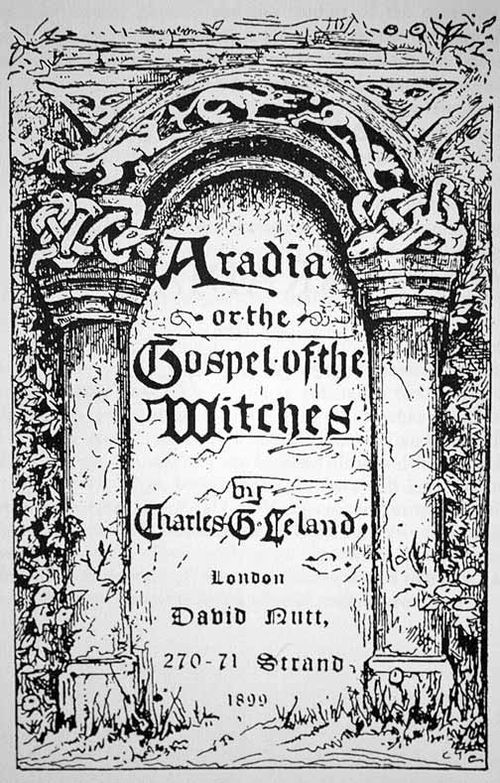
Similar to Margret Murray and Gerald Gardner, Charles Leland was another foundational believer in witchcraft and the existence of the ancient religion. Through his extensive study of Italian folklore and traditions he believed that an ancient text existed detailing the origins and beliefs of witches, specific to Tuscany, Italy. As a result he created Aradia, the Gospel of the Witches, 1899.
The Aradia contained the beliefs and rituals of witches and detailed, through poems and prose, the story of Diana, 'the goddess of witches'. Goddess Diana was impregnated by her brother Lucifer, the light-bringer, Sun. Aradia is born with the task of teaching witches how to protect the weak against the strong and oppressors, the Roman Catholics in particular. As a goddess, Aradia returns home to the heavens, but continues to call upon her witches at the onset of a full moon to gather in the woods and celebrate with a consecrated meal called sabbat. She can also be called upon by her witches to utilize her powers.
The origin of Aradia was influenced greatly by a "witch informant" referred to as Maddalena. While the text details the legends of Diana, Aradia also provides practical magic of spells, blessings, and rituals. Interested in a love spell, well you came to the right place.
At the time of its creation, Aradia was also seen as an anti-hierarchical counter religion to the Catholic-Church. While authenticity of Aradia is still called into question, it remains central to the Wiccan tribes today (Day 11).
Day 15: Coffins

In the era before modern medicine, superstitions surrounding death were abundant. However, I recently discovered one that aligns perfectly with our 'spooky' theme of corpses, skeletons, coffins, and death.
Back in the 18th and 19th centuries it was a common fear that you could be buried alive. Apparently the techniques used to detect death were less than adequate, to say the least. Use of a feather or mirror to detect breath.
This anxiety drove the need for certain measures to be taken to ensure the person was truly dead ahead of their burial. The details can be found via this link to History Facts.
The first that struck me was the French design where an apparatus was adorned to the coffin allowing for a bell to ring at the slightest movement of the body as well as a tube allowing the ‘buried’ individual to call for help, yikes. Now, there were some 'false alarms' caused by the normal movement decay of a corpse, so this design lost popularity quite quickly.
Second, in Germany they had “waiting houses” for the dead. Essentially, a stopping point for bodies to be staged ahead of burial to really ensure they were deceased. Individuals were even allowed to visit these houses during operation to ‘witness’ the process and confirm they wanted to participate, where the time comes.
Our fascination with the dead and death never cease to amaze.
Day 16: Corpse / Skeletons
Although encountering dead bodies isn't common for us today, it wasn't always this way.
The transition from life to death was once commemorated by creating a sculpture depicting a person both alive and as a decomposing corpse, also referred to as transi. An example of this practice can be seen in the cadaver tombs found in churches in English, France, Germany, Netherlands, Italy, and Ireland.
During the start of the 14th Century, dead bodies were more prevalent and were viewed as a celebration of those who had passed away.

The foundational belief that the bodies of saints were spiritually potent created the desire to have them displayed to the faithful. Churches honored saints through shrines that contained the body, or parts of, the saint. This was also common for higher society where portions of their bones were placed within elaborate shrines. Alternatively, a depiction of the saint's martyrdom through vivid images and murals. A few examples include, St. Bartholomew holding his own flayed skin or St. Lawrence who roasted to death.
Incorruptible. This term was new to me, but albeit quite fascinating. Throughout Europe there are a multitude of churches that have relics and incorruptible available for public viewing. Here are a few notable ones shared by The Catholic Traveler: Saint Antoninus of Florence, Capuchin Crypt of Santa Maria dell’Immacolata Concezione in Rome, St. Rita of Cascia, Saint Catherine of Siena.
The crypt that fascinated me the most was the Capuchin crypt, where the bones of over 4,000 monks are arranged on the walls and ceilings in an artistic and decorative way, creating a unique combination of beauty and morbidity.
It can be said that the devilish costumes that are synonymous with Halloween can be connected back to these historic practice as well as the vivid illustrations of pain and suffering. It wasn't uncommon for the churches to display images of inferno littered with demons, devil and ghouls…trick-or-treat indeed.
Day 17: Ghosts
The belief of spirits wandering the living realm is based on a traditional belief called Ghostlore. The foundational belief of deceased souls lingering in the physical world as they were unable to find peace in the afterlife and their presence was either benevolent or malevolent.
According to many cultures and traditions there are different types of ghosts: Vengeful (died under unjust / violent circumstances and seek revenge), Friendly (providing help and guidance to the living), Poltergeists (responsible for physical disturbances), Ancestorial (deceased spirits honored with offerings and prayer providing guidance and protection), Children (deceased children possessing potent and powerful skills seen both as good luck and as vengeful), Animals (Spirits of beloved pets, playing an important role in the community).
Spirits maintain a strong hold on culture and beliefs across the world, to name a few:
The Green Lady known to many Scottish folktales is prominent through Scottish mythology. Her presence can vary from a kind guardian angel to that of a vengeful spirit and can be seen in few notable castles throughout Scotland: Crathes, Fyvie, Stirling, Tulloch.
The Banshee is one of the most well-known and feared spirits in Irish folklore, referred to as "woman of the fairy mound". To hear the scream/wail of the banshee means a death of a family member is coming. Physical descriptions differ, yet they consistently depict her with long flowing hair, red eyes from continuous weeping, and a veiled appearance. References to banshees date back to 1380..
The Huldufolk faires / elves ('Hidden People') of the Faroe islands are said to have similar features as humans. They are very special to the Faroses people and seen as a symbol of natural beauty and isolation; a reminder to the living the importance of living in harmony with one's environment and respecting the natural. Michael Strmiska writes:
"The Huldufólk are ... not so much supernatural as ultranatural, representing not an overcoming of nature in the hope of a better deal beyond but a deep reverence for the land and the mysterious powers able to cause fertility or famine."
Ghosts, or Bhootas, is deeply rooted in Indian cultures. The origin of Bhootas stems from a belief that the spirit is restless due to its inability to move on. Bhootas are known to shape-shift from humans to different animal forms. They avoid contact with the earth and therefore are typically seen floating above the ground. They don't cast shadows, lurk around trees, and typically are seen in white clothing.
Sihuanaba, a shapeshifting horse-faced woman, is prominent throughout Latin America as a ghost who preys on men, typically unfaithful ones.
Ghosts have a will remain an integral part of our culture and connection to one another, living or deceased.
Day 18: Haunted Places (Part I)
Reflecting the origins of this season, our interest in the boundary between the living and the spirit world is most evident in our eagerness to explore haunted locations. A whole industry has been developed to cater to this interest. From mediums to ghost hunters, our morbid curiosity as humans to see, communicate with, and understand the dead has been and will continue to be a powerful motivator.
While the number of 'haunted places' across the globe are in the thousands, let's focus on a few … Have you been to any? (Full list: Top Haunted Locations)
Argentina, La Recoleta Cemetery in Buenos Aires is one of the most beautiful cemeteries in the world. The likes of Eva Peron and Julio Argentino Roca are buried here. The mausoleums are elaborate and impressive, giving the sensation of strolling through a city, a haunted one at that. One in particular is the ghost of Rufina Cambaceres. Rufina, a young socialite, was reportedly buried alive at 19 when she was found unresponsive in her room. Her funeral was held immediately the following day. A groundskeeper heard loud noises coming from her vault later that night. He found the coffin lid was moved and scratches on the interior, clear signs of being buried alive. Following this incident funeral practices required bells to be added to coffins. (Coffins)
The Ararat Lunatic Asylum in Australia. After being closed in 1998 it was turned into a winery and training center in the early 2000's. 30 hectares of vineyards and 10 hectares of olive groves. The first vintage was produced in 2005, a full bodied wine with hints of ghostly spirits.
The Princess Theatre (Melbourne) has several reported ghost sightings, but the most notable is that of Frederick Baker. Frederick, or Frederick Federici, was a talented bass-baritone who died of a heart attack onstage in 1888 while signing the role of Mephistopheles in Faust. Following his death he was seen by the cast bowing at the conclusion of the show. He was so prevalent that a vacant seat was saved for him in the dress circle, until it became too costly. To this day the theatre considers a Federici sighting during rehearsals as a good omen.
The Valley of the Kings in Egypt is known for visions of an Egyptian Pharaoh riding a fiery chariot and adorned with golden collar and headdress.
The infamous Chateau de Versailles is known for a ghost sighting or two. Visitors have seen people walking the grounds in 18th-century clothing as well as a beheaded Queen Marie Antionette.
The Frankenstein Castle in Odenwald, Germany is known for significant paranormal activity. Some claim the castle inspired Mary Shelley when she wrote the novel Frankenstein. Tied to this claim the castle also housed an alchemist, by the name of Johann Konrad Dippel. Dippel allegedly performed experiments on exhumed bodies and some even claim that he brought a 'monster' to life by a bolt of lightning.
Igorchem Bandh, a road in the village of Raia in Goa, India is known for its midday haunting, specifically between 2pm - 3pm. Individuals have reported experiencing unusual haunting activities including possessions. In some cases those who have experienced possessions are met with bizarre and untimely deaths.
More to come … tomorrow
Day 19: Haunted Places (Part 2)
The variation of hauntings are wide-spread and I can't wait to dig into more spooky stories…and what better place to start than Ireland
Charles Fort is bastion fort constructed in 1682 located in Kinsale harbour. The grounds are haunted by a 17th century bride, 'The White Lady of Kinsale' … I even thought I caught a glimpse the last time I was in Kinsale.
Kilmainham Gaol is a former prison, built in 1796. The prison housed Irish revolutionaries including leaders of the 1916 Easter Rising. The paranormal activity is very prevalent across the grounds. The chapel lights turn on and off, forces push people around, the noise of footsteps echo throughout the hallways, and there is an erie feeling of being watched by spirits. Haunted House indeed.
Hotel Tugu Malang is a 5-star hotel know for a collection of Peranakan antiques including a portrait of the former First Lady of China, Oei Hui-Ian. Visitors have reported they were visited by the spirit of Oei Hui-Ian.
Colosseum, one of the most famous structures in the world, is indeed haunted. Testimonies of ghostly figures wandering the staircases, loud screams and cheers from empty stands, and the spirits of gladiators wondering around the vaults of the colosseum floor.
Poveglia, and island near Venice, is recognized as one of the most haunted places in the world. The island was a sanctuary to refugees and a hospice for sick patience throughout history. In 1922, it housed a mental hospital where the resident doctor, reportedly, used lobotomies on patients. Later he threw himself off the hospital tower following claims of being driven mad by the spirits of the island.
Mount Oscore a Buddhist temple in Japan is believed to be a gateway to the underworld.
Gridley Tunnel, outside of Yokosuka Japan, is located on a naval base where a samurai appears to solo explorers between midnight and 1am on rainy nights.
Day 20: Jack-O-Lantern

Ubiquitous with Halloween, the Jack-O-Lantern has a special meaning for me during this festive season. From carving pumpkins starting at the age of 3 to meticulously identifying, designing, and ultimately carving the perfect pumpkin every year, pumpkins bring so much joy.
(See Trick and Treat? for a full run down of pumpkins over the past years…and an extensive Halloween Movie List)
The legends behind 'Jack-O-Lantern' take many forms, however, this one really struck me. Both eerie and sinister, perfectly fitting for this time of year.
Originating from an Irish folk tale (arguably the best), we have Stingy Jack. Jack was a blacksmith renowned for being both lazy and cunning.
Satan himself sought out Jack, eager to verify the notorious wickedness Jack was reputed for. Upon finding Jack, Satan announced his plan to take Jack to Hell. Jack, however, requested one last drink to satisfy his thirst. Satan accompanied Jack to the pub, and when the bill arrived, Jack asked Satan to transform into a coin to pay for the drinks and trick the pub owner. Satan complied and turned into a coin. After paying, Jack placed the coin in his pocket beside a cross, trapping Satan. Jack agreed to release him on the condition that Satan spare Jack's soul for ten years.
A decade later, as Jack was harvesting apples, he encountered Satan in the orchard, who had returned to claim Jack's soul. Jack requested Satan's assistance in picking an apple from a tree. When Satan climbed the tree, Jack swiftly carved a cross into the trunk, trapping Satan. Jack then made Satan promise never to take his soul.
Eventually, Jack died. Because of his wicked deeds committed during life, he was unable to enter heaven. Upon encountering Satan, Jack was reminded that he was also barred from entering Hell. Left with no place to go, Jack found himself alone. As he roamed in the darkness, he begged Satan for some light. With a laugh, Satan threw him a burning coal. Jack then hollowed out a turnip, his favorite food, and put the coal inside.
He know wanders the earth endlessly looking for his final resting place. … Maybe you'll see him on Halloween night.
Day 21: Bobbing for Apples
Apples hold a special meaning during the harvest season with long history with Celtic traditions.
The most well known apple, is that of the garden of eden. Apples have had a significant place in history and mythology.
In Ireland, Snap-Apple Night, is prominent on Halloween (Samhain) as they were a symbol of fertility and abundance. Allantide, a cornish festival celebrated on Samhain. The main tradition includes giving Allan apples, large glossy red apples to family and friends as tokens of luck.
Dating back to Roman times, festivals where unmarried women would bob for apples in a tub or on a string. The first to catch a bite, was the next to marry. Apples were also used in many divination activities, holding mystical and seductive powers.





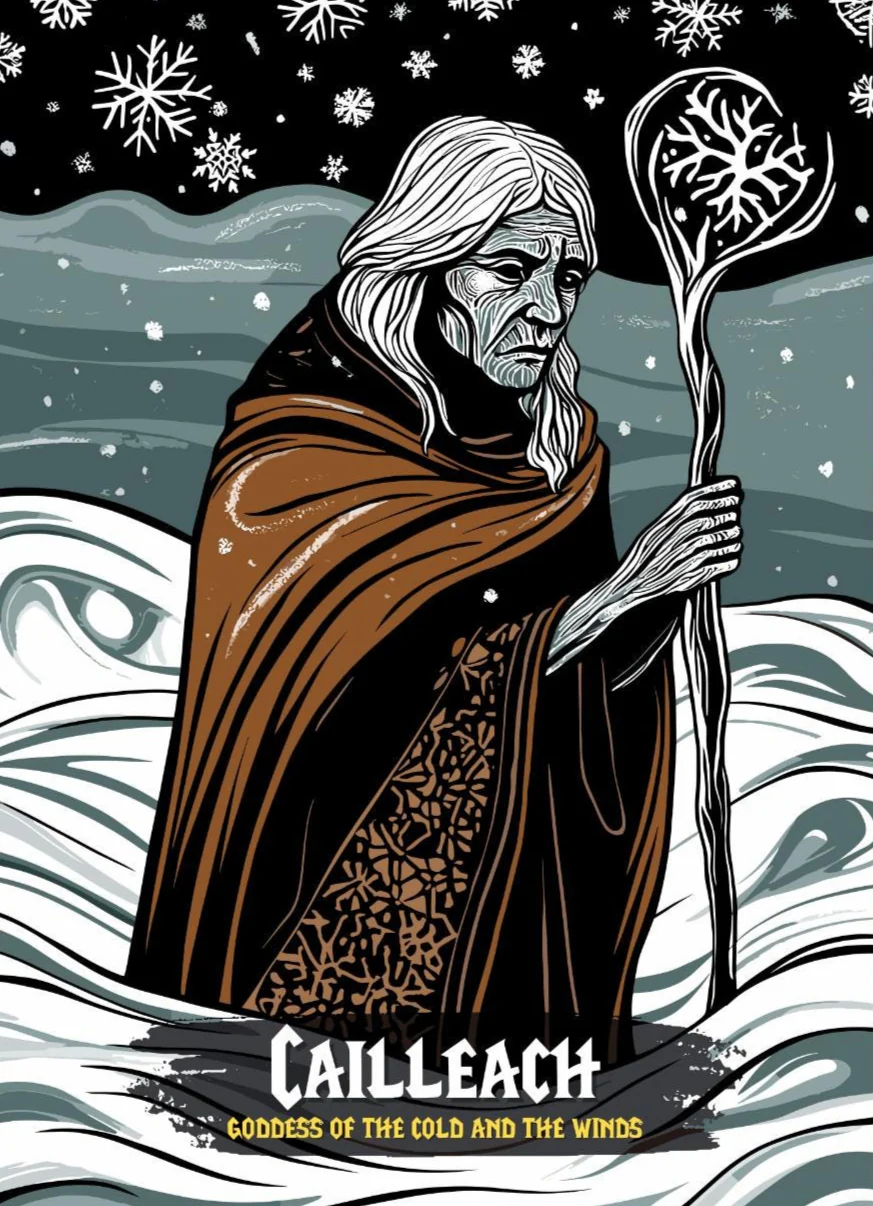





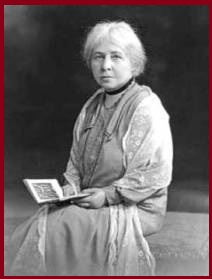












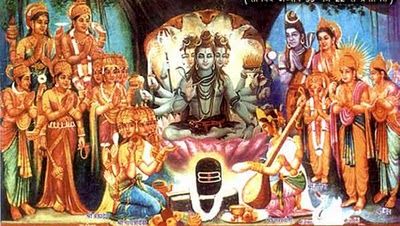
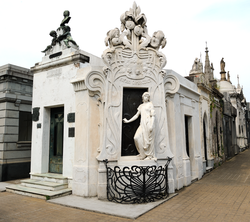















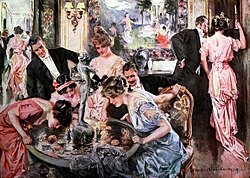





Comments